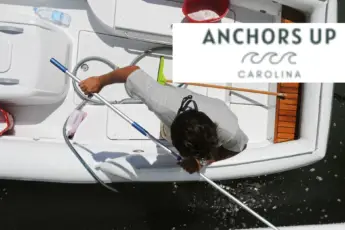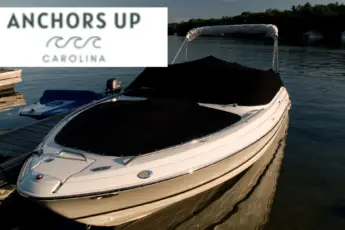As a captain, I frequently worked aboard large vessels well over 100 feet in length. With that said, it was common to utilize face docks versus slips when securing in marinas. The difference between a slip and a face dock is significant. For this reason, it is important to know what is a face dock? Here is what you need to know about what a face dock is and how to approach it when docking.
What Is A Face Dock
A face dock is easily identifiable when compared to a marina boat slip. This part of the dock is most often the furthest point from the land beyond the slips.
At the end of the floating or fixed structure over the water is a dock without fingers. The face dock is most often positioned closest to the main channel compared to the slips.
Importantly, a face dock is easy to approach as a boater because it offers ample room to maneuver. Additionally, you’re not required to back into or drive bow first into confined spaces such as what you encounter with a slip.
Pump Out Stations
Often, the face dock is equipped with a pump out station. The pump out is positioned on the face dock so that transient boaters can secure dockside and pump out the black water tank while fueling up.
For the most part, a sign is posted on the dock that denotes pump-out services are available. However, you may want to confirm with the marina before going out of your way.
Fuel Pumps
In addition to pump-out stations on face docks are fuel pumps. Again, the face dock is designed to allow boats of all sizes to pull up and pull away with ease compared to slips.
Furthermore, it is likely to find both diesel and gasoline pumps on face docks.
Not All Face Docks Are Intended To Provide A Service
Unquestionably, not all face docks have the equipment to serve boat owners. Never assume that all face docks are utilized for fueling, pump outs, or picking up or dropping off passengers.
Instead, this type of dock is also for private use. During my time aboard yachts, the company leased face dock space to secure the largest vessels in the fleet. With that said, this type of dock is constructed with the intention of providing dockage for large boats.
Additionally, considering the location, face docks are positioned over the deepest water to prevent vessels from running aground compared to the slips positioned closer to land.
Techniques For Approaching A Face Dock By Boat
Without question, one of the more simple approaches when docking is securing to a face dock. Here are techniques for approaching a face dock.
Assess The Conditions
One of the first things that I do when docking is determine the direction and force of the wind. Secondly, I watch the water to determine the strength and direction of the tidal flow.
Once you have determined this critical information, you can make the most informed decision on how to approach the dock.
I always drive the bow of the boat into the current. Driving into the current allows you the most control over the vessel. The wind direction and speed may either set you against the dock or blow you away from the dock.
Monitor For Traffic
Some of the busiest docks are face docks. Vessel owners come and go from fuel docks regularly, especially over the weekend.
With that said, you’re going to want to determine if dockage is available in the event you’re pulling up to a fuel dock versus your private face dock.
In the situation where the dock is congested. Determine if you have enough space to fit. If not, circle the area until it frees up.
However, in some cases, space will be available, but the approach is tight. Never take a chance of securing to a face dock if you’re at risk of ping-ponging off of other vessels.
In one situation, a Viking Sportfish in the fleet of boats I was traveling with lost all of its hydraulic fluid. The fluid rendered the steering system useless. The captain was forced to dock the boat by use of the throttles only.
Have The Dock Lines Ready
One of the best pieces of advice when docking along a face dock is to have the dock lines ready to deploy.
With that said, the lines must be secured to the boat cleats ready to make a tie on the dock. Unfortunately, boaters fail to be prepared and cannot hold the vessel in position while passengers scramble for lines.
The spring line is the most important of them all. The spring line is capable of holding the vessel tight to the dock while maneuvering or when sitting bow into the current.
Now You Know What Is A Face Dock
Again, it is important to know not only what a face dock is but also how to approach and secure a vessel. Face docks, without question, play an important role in more than just dockage but also for fueling, performing pump outs, and more. Lastly, be mindful of other boaters. Don’t overstay your welcome when it comes to public face docks.






